One of my favourite places in Yorkshire is beautiful Haworth, where the Brontë sisters lived between 1820 and 1855. Charlotte, Emily and Anne Brontë wrote some of their most famous books here in Haworth at the Parsonage (now the Brontë Parsonage Museum), and the wild moorland landscape around Haworth was a rich source of inspiration for them. Visiting Haworth and the Brontë Parsonage Museum is a must-do for any book-lover.
In this post you’ll find out how to get to Haworth, tips for visiting the Brontë Parsonage Museum and ideas for other things to do in Haworth.
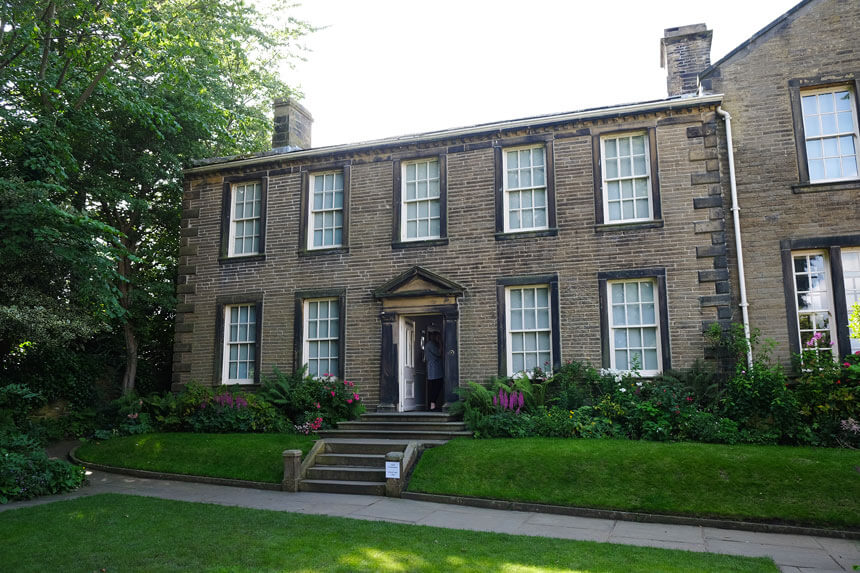
Where is Haworth and Brontë Country?
Haworth and the Brontë Country is in West Yorkshire, in the North of England. Haworth is 42 miles to the west from York and 20 miles from Leeds, which is the closest major city to Brontë Country. Manchester is 45 miles to the south west. Visiting Brontë Country is an easy day trip from Manchester, Leeds, Bradford and many other parts of the North.
This part of West Yorkshire is wild, rural and incredibly beautiful. Mill villages like Haworth are dotted around the landscape, usually in the river valleys which provided the power for the mills. Up on the moors you’ll find remote farmhouses like the one which inspired Wuthering Heights. You’re never very far from a waterfall, wood or a romantic windswept walk along ancient trails.
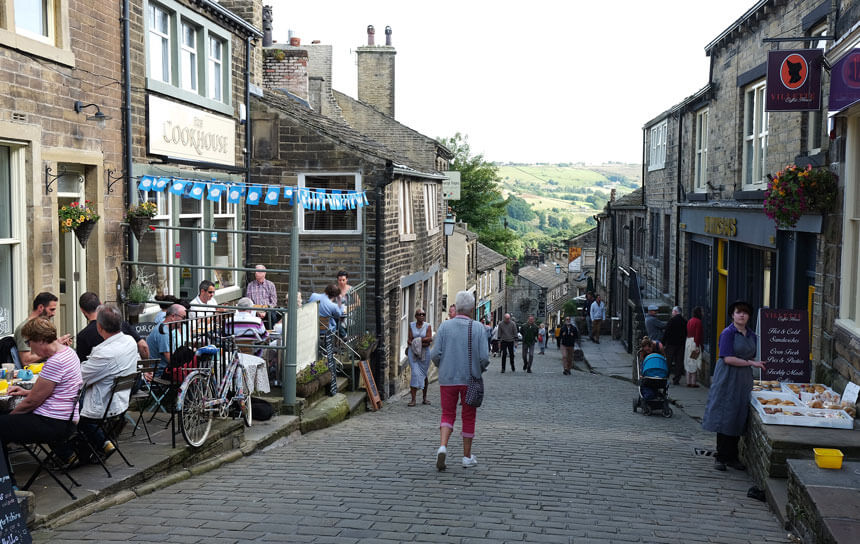
Today, Haworth seems idyllic, but during the period that the Brontë sisters lived in Haworth, it was a cramped industrial town, with a death rate just as high as in cities like London. Nearly half of the children in the town died before their sixth birthday and the average age when people died was just 24. Disease and mill accidents were rife. Charlotte, Emily and Anne Brontë lost two of their sisters in childhood, and none of the sisters reached their 40th birthday.
Where is the home of the Brontë sisters?
The Brontë sisters lived most of their lives at the Parsonage in Haworth. Their father Patrick Brontë was the priest at Haworth Parish Church, a position which brought with it a house next door to the church – the Parsonage. After Patrick Brontë died in 1861 the contents of the Parsonage were auctioned off to clear it for the next occupant.
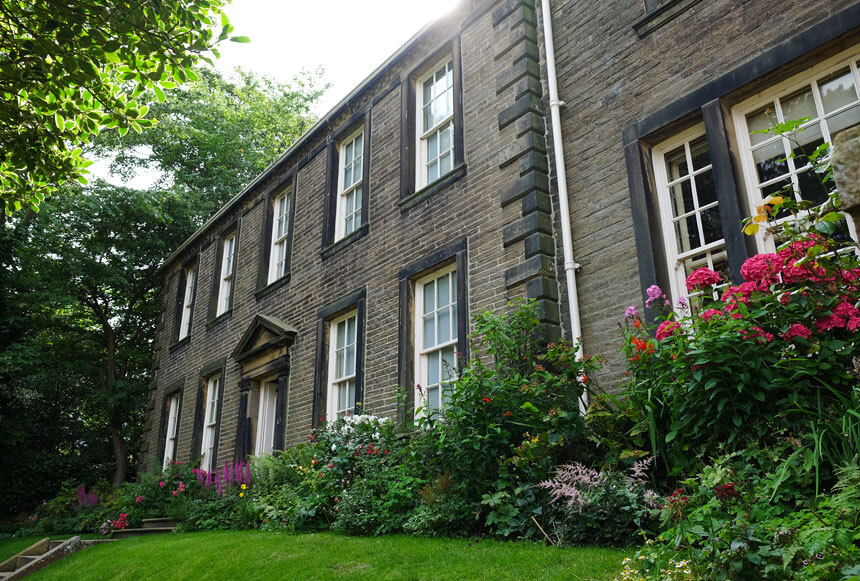
The house was bought by a local businessman in 1928 and given to the Brontë Society to be used as a museum. The Brontë Society has been working on gathering the Brontës’ belongings and returning them to Haworth ever since.
Timeline of the Brontës in Haworth
April 21, 1816: Charlotte Brontë was born. At the time, her father Patrick Brontë was curate of the church at Thornton, 6 miles from Haworth. Charlotte was the third child of Patrick and Maria Brontë; her two elder sisters Elizabeth and Maria both died in 1825 aged 10 and 11 of tuberculosis.
June 26th, 1817: Branwell Brontë was born.
July 30th, 1818: Emily Brontë was born.
January 17th, 1820: Anne Brontë was born.
April 20th, 1820: The Brontë sisters’ father Patrick became curate of Haworth Church and the family moved to the Parsonage in Haworth.
September 15th, 1821: The children’s mother Maria Brontë died of cancer, aged 38.
1824-1825: The two eldest Brontë children, Maria and Elizabeth were sent to Cowan Bridge School, followed by Charlotte and Emily. In May 1825 Maria died of tuberculosis, and in June Elizabeth also died. Charlotte and Emily returned home to Haworth.
1831-1846: The Brontë sisters attended various schools and took up governess positions. In 1842 Charlotte and Emily went to Brussels to study at the Pensionnat Heger, and in 1843 Charlotte returned there alone as a teacher. Charlotte’s experiences in Brussels and unrequited love affair with the charismatic Constantin Heger had a huge impact on her writing, most notably in the novel Villette.
May 1846: Charlotte, Emily and Anne Brontë publish a book of poems under the male pen names Currer, Ellis and Acton Bell. They believed that they wouldn’t be taken seriously if they submitted their manuscript under their real names. This first book of poems sold only a few copies, but the sisters were spurred on to write the novels that would make them famous.
October 19th, 1847: Charlotte Brontë’s novel Jane Eyre was published. Although Jane Eyre was the first of Charlotte’s novels to be published, it was actually the second to be written. Her first novel, The Professor, wasn’t published until after Charlotte’s death.
December 1847: Emily Brontë’s novel Wuthering Heights and Anne Brontë’s novel Agnes Grey were published.
June 1848: Anne Brontë’s second novel The Tenant of Wildfell Hall was published.
July 1848: Charlotte and Anne travelled to London to meet Charlotte’s publisher and reveal the sisters’ true identities.
September 24th, 1848: Branwell died of tuberculosis, aged 31. He was buried in the family vault in Haworth church.
December 19th, 1848: Emily Brontë died of tuberculosis, aged 30. She was buried alongside Branwell.
May 28th, 1849: Anne Brontë died of tuberculosis in Scarborough, aged 29.
1849: Charlotte Brontë’s novel Shirley was published.
1853: Charlotte Brontë’s novel Villette was published.
June 29th, 1854: Charlotte married Arthur Bell Nicholls at Haworth church. She was the only one of the siblings to marry. The couple moved in with her father at the Parsonage.
March 31st, 1855: Charlotte died in the early stages of pregnancy, three weeks before her 39th birthday. Her official cause of death was recorded as tuberculosis but more recent biographers believe that she actually died of dehydration and malnourishment caused by severe morning sickness. She was buried with Branwell and Emily in the vault at her father’s church.
June 7th, 1861: Reverend Patrick Brontë died at the Parsonage, aged 84. He was the last of the Brontës in Haworth.
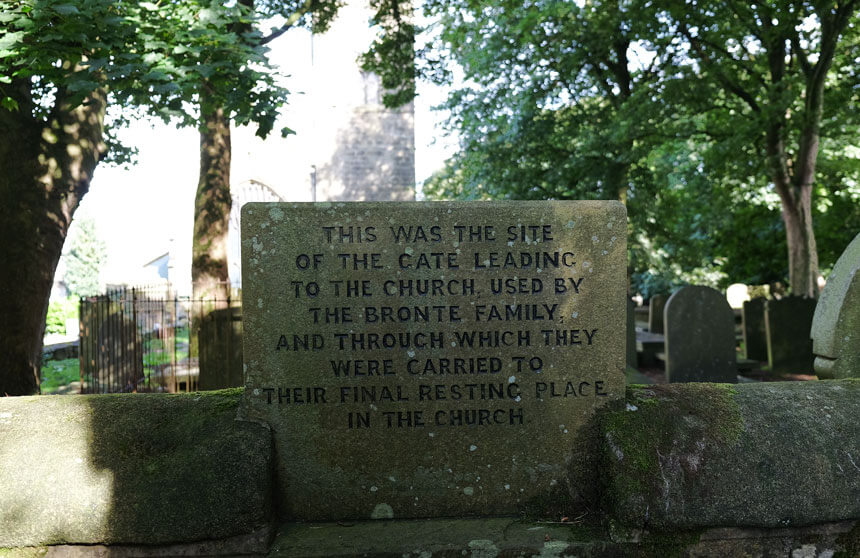
Visiting the Brontë Parsonage Museum in Haworth
For any lover of the Brontë sisters’ books, visiting the Brontë Parsonage Museum is a wonderful experience. The house has been restored and re-furnished to be as close as possible as it was when Charlotte, Emily and Anne lived there.
When you visit, you’ll buy your tickets in the gift shop at the side (this part of the house is a later addition) and then walk round, through the garden gate and in through the front door. The serene atmosphere of the house hits you straight away, as does its simplicity and compactness.
As you enter the hall, the first thing you’ll see is the stairs up to the first floor. The stone steps are slightly worn away in the middle and you get a very powerful sense that you’re walking in the Brontë sisters’ footsteps.
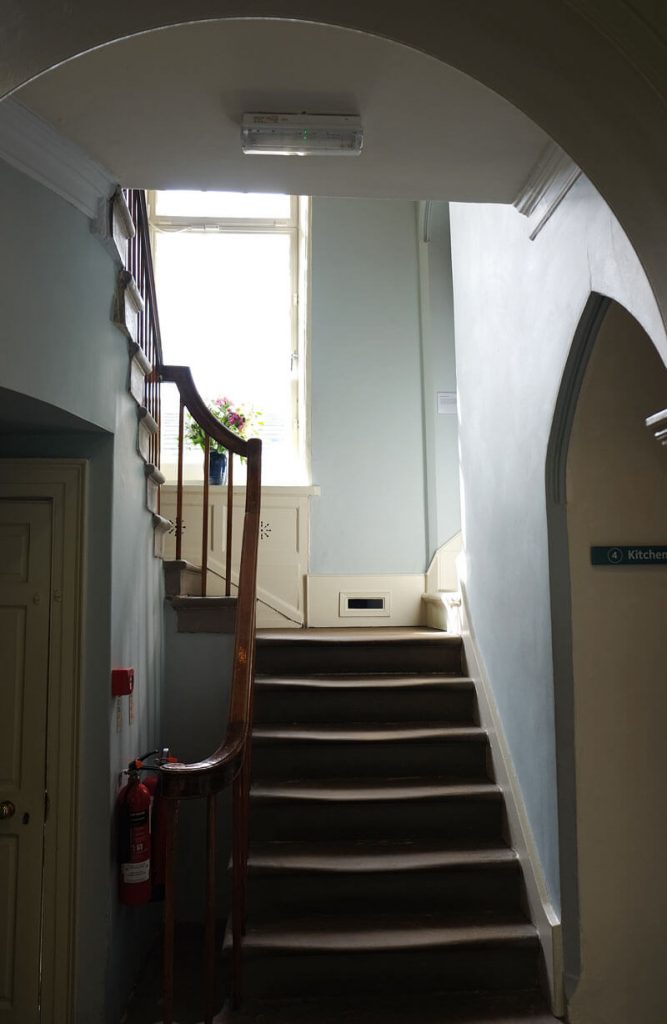
The first room in the Parsonage to see is Mr Brontë’s study, where he carried out most of his Parish work.
On the other side of the hall is the Dining Room where Charlotte, Emily and Anne did most of their writing. Charlotte’s Jane Eyre, Emily’s Wuthering Heights and Anne’s The Tenant of Wildfell Hall were all written in this room. While working on their novels, the sisters used to walk in circles around the dining table, reading, discussing and offering each other advice. The sofa in this room is where Emily is reputed to have died; after Emily and Anne’s deaths, the family’s servant described how her heart ached to hear Charlotte “walking, walking on alone”.
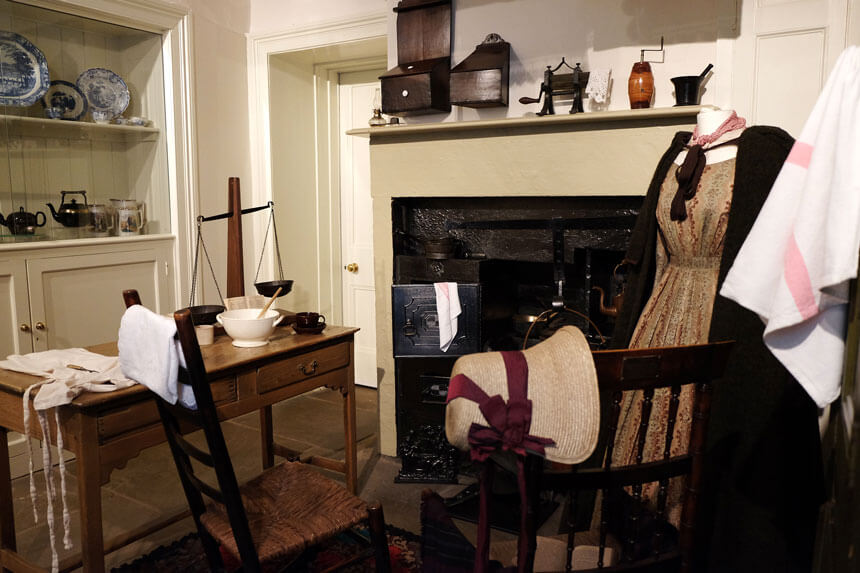
The kitchen was the heart of the Brontë family home. The room was changed a lot when the house was extended in 1878 but the furniture and the china that you can see as a visitor all belonged to the Brontës.
The fourth and final room on the ground floor was Arthur Bell Nicholls’ Study. This room was originally a fuel store but Charlotte Brontë converted it into a cosy study in 1854 for her husband-to-be.
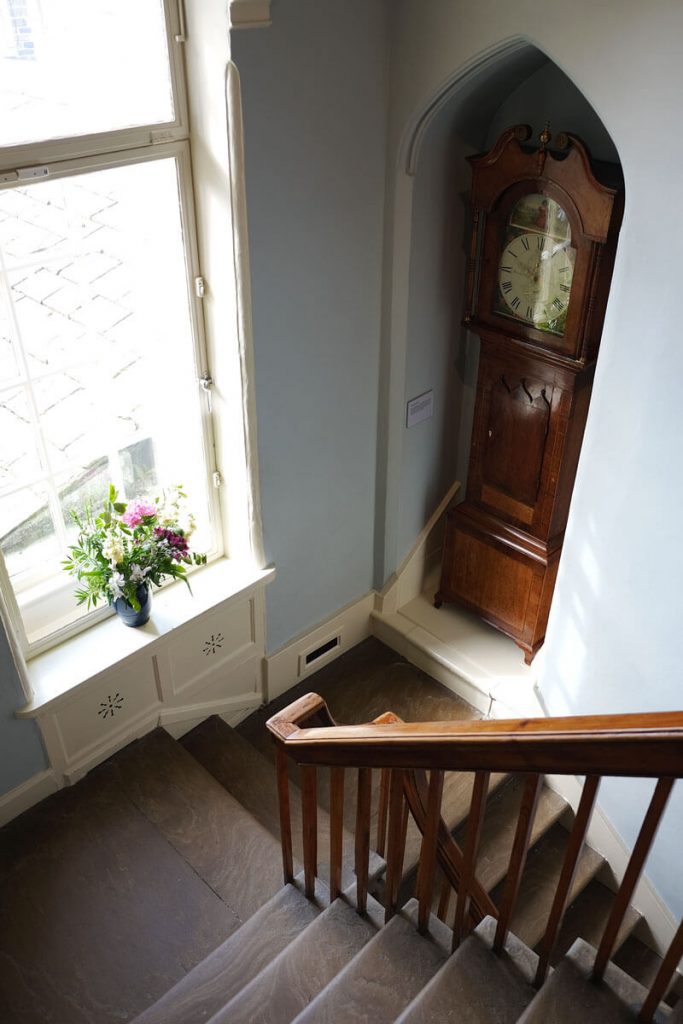
After you see Mr Nicholls’ study it’s time to walk upstairs to the bedrooms. On the way you can see the old grandfather clock which Patrick Brontë would wind every night on his way to bed.
On the opposite wall you can see a reproduction of a painting of Charlotte, Emily and Anne Brontë, painted by their brother Branwell. Branwell was famously originally in the picture but painted himself out at the last minute. You can clearly see where his portrait would have been, between Emily and Charlotte. The original of this painting hangs in the National Portrait Gallery in London.
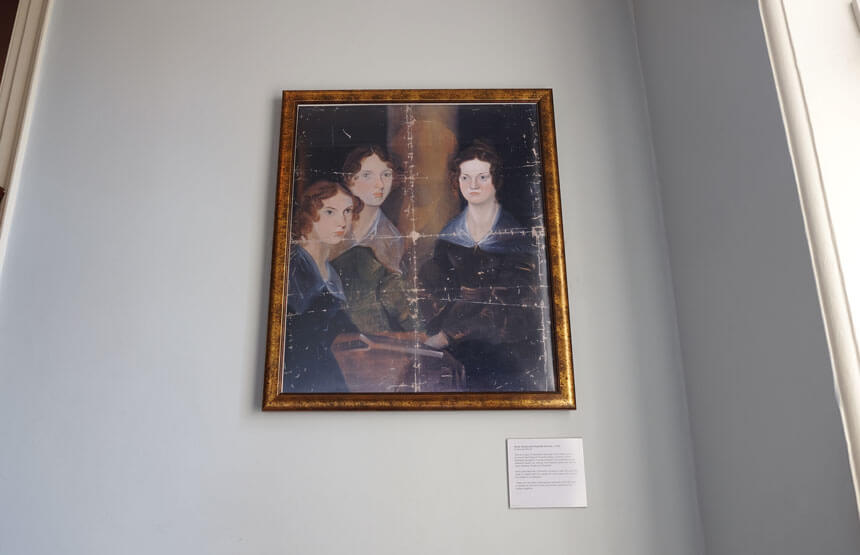
At the top of the stairs the next room to visit is the Servants’ Room. One servant in particular, Tabitha “Tabby” Aykroyd, was a great source of comfort and a nurturing presence to the Brontë children after their mother Maria died. The youngest Brontë, Anne, was only 18 months old when her mother died.
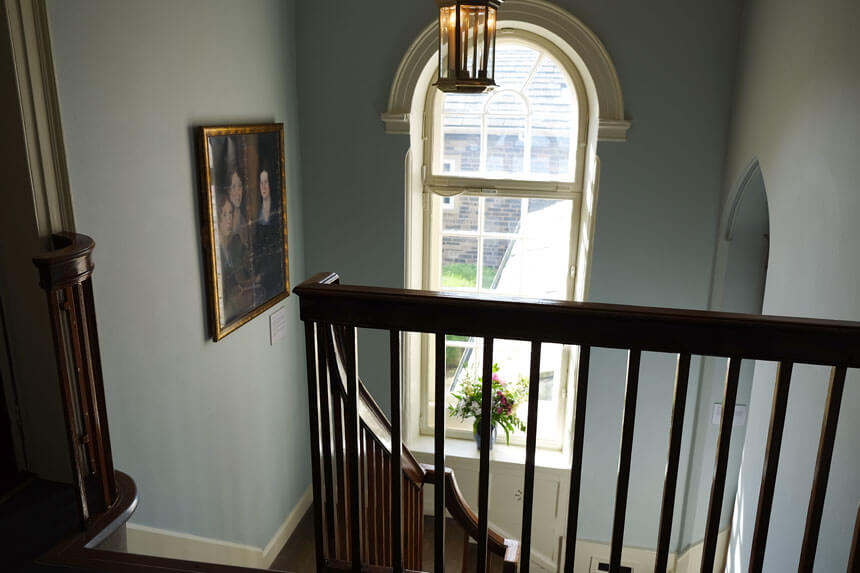
After the Servants’ Room you’ll go into Charlotte Brontë’s bedroom. Charlotte shared this room with her husband after their marriage in 1854 and she died here only nine months later. You can see some of Charlotte’s clothes and shoes displayed in this room. You might be surprised at how tiny they are – Charlotte was only around four feet seven inches tall.
Next is the Children’s Study. This room (which used to be larger before Charlotte made alterations to the house in 1850) was never called a playroom, even though most of the Brontë children were very young when they moved to the Parsonage. In this room they wrote and illustrated their “little books” – tiny volumes full of fantastically imagined worlds. Emily Brontë used this room as a bedroom for the last few years of her life.
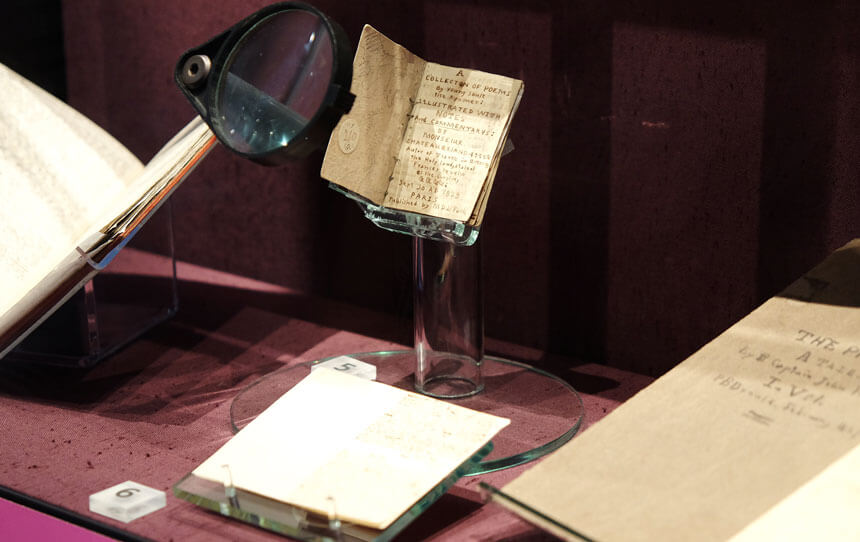
The last room at the front of the house was Mr Brontë’s bedroom. Branwell slept in here with his father during his final years. Patrick Brontë was worried that Branwell’s addictions could mean that he was a danger to himself and the rest of the family, so they shared this room so he could watch over his son. Branwell died in this room in 1848.
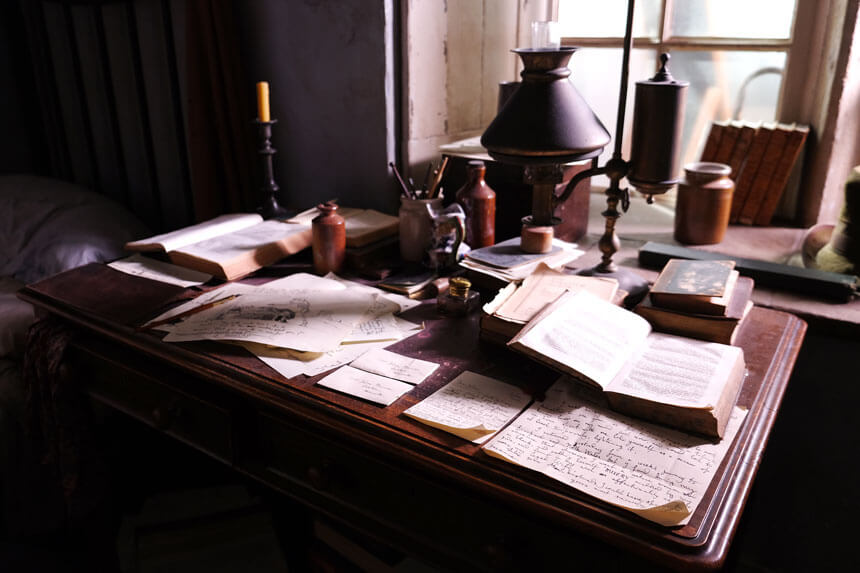
The final room of the original Parsonage house is Branwell’s Studio. Before the house was extended this room had views towards the moors. During the late 1830s Branwell tried unsuccessfully to forge a career as a portrait painter. You can see examples of his work displayed here.
The last rooms at the Brontë Parsonage Museum are the Exhibition Room and the Bonnell Room. These rooms are in the 1878 extension to the Parsonage, an extension which nearly doubled the size of the house as the Brontë sisters would have known it. The Brontë Parsonage Museum houses exhibitions related to the family’s life, their work and the times they lived in. In recent years the 200-year anniversaries of the sisters’ birth dates have been commemorated with a five-year-long series of exhibitions called Brontë 200.
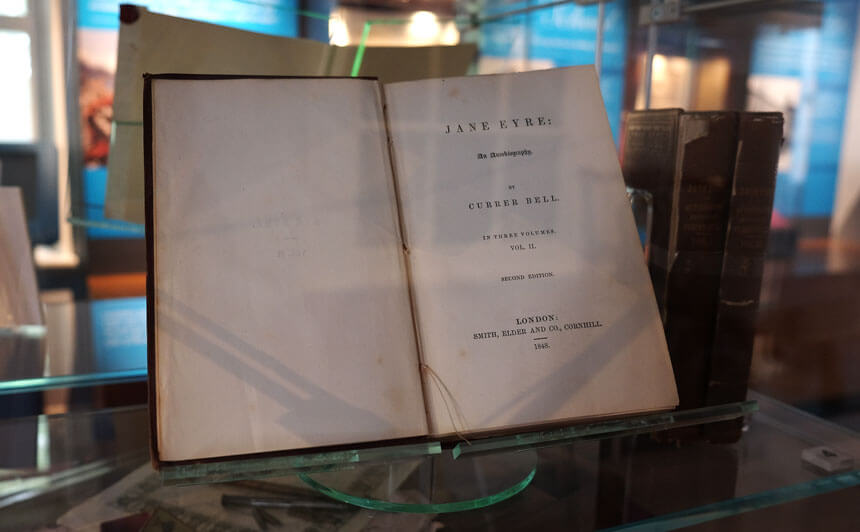
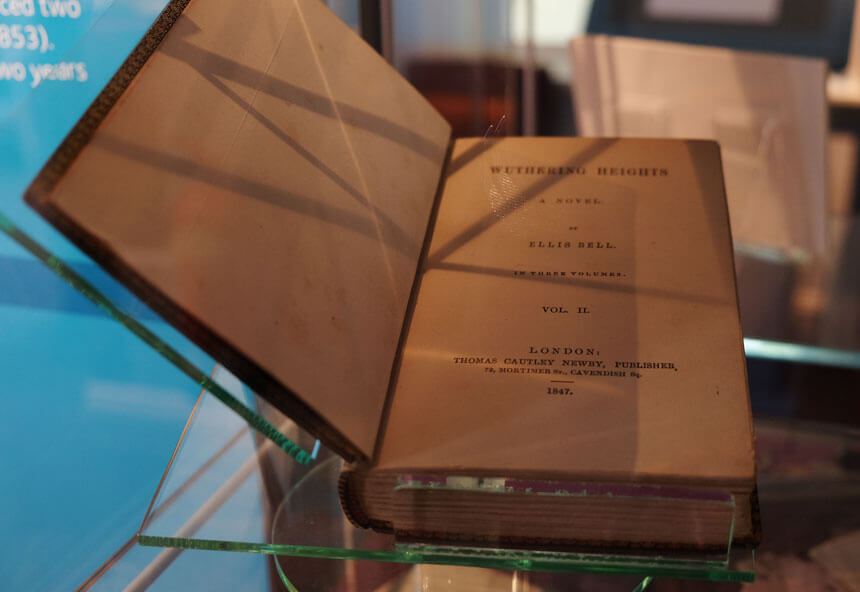
The Brontë Parsonage Museum has a small shop where you can buy souvenirs of your visit to Haworth, along with the sisters’ novels in a range of editions. They also sell biographies of the Brontë sisters, including The Life of Charlotte Brontë by Charlotte’s friend and fellow novelist Elizabeth Gaskell. As you leave, don’t miss out on a last look at the garden, which is essentially the same as it would have been when the sisters lived in the house.
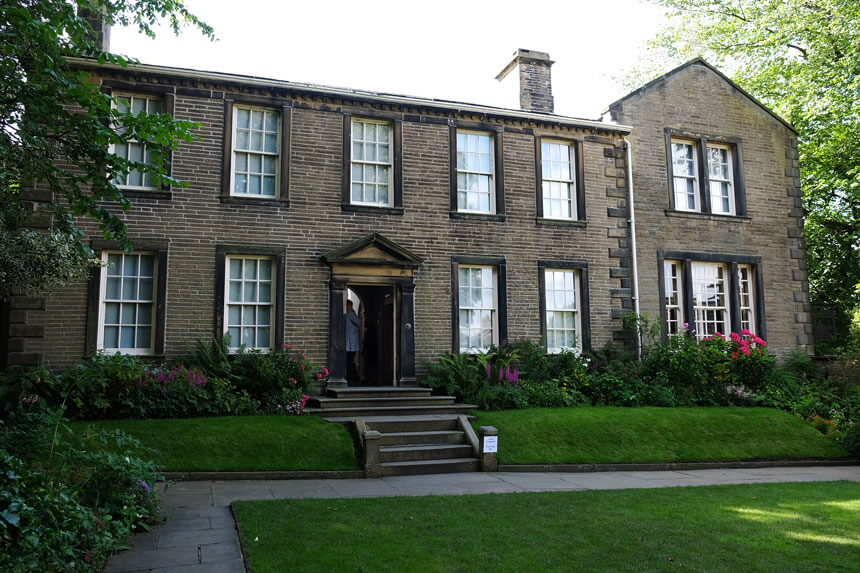
More things to do in Haworth
When you visit the Brontë Parsonage Museum, don’t miss out on seeing the rest of the village the Brontës lived in. There are plenty of other things to do in Haworth.
Haworth Parish Church
St Michael and All Angels Church is next door to the Parsonage and is where Patrick Brontë was the parish priest for 41 years until his death in 1861. The old church was largely demolished and rebuilt in 1879 as it had become unsafe and unsanitary – water from the overcrowded graveyard was seeping through the floor of the church.
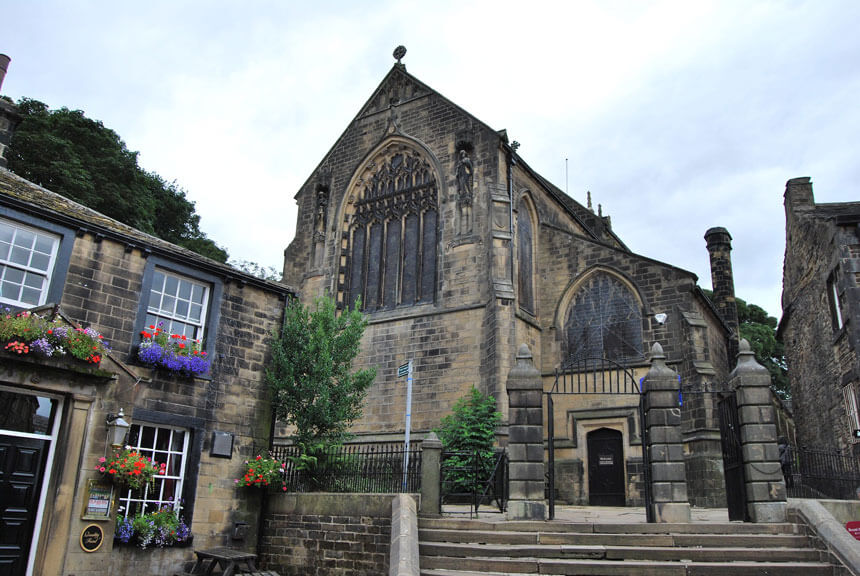
The church you see today, therefore, isn’t the same one that the Brontë sisters would have known, but some features (like the 15th century tower) remain, and you can visit the Brontë family tomb and memorial inside the church.
Anne is the only one of the sisters not to be buried in the church – she died on a visit to take the fresh sea air in Scarborough and is buried there.
The Old School Room
On the opposite side of Church Street to the Parsonage you can see the Old School Room. This was built by Patrick Brontë in 1832 for the benefit of the children of Haworth. Patrick Brontë was a passionate social reformer, and he was tireless in his efforts to secure improved education and more sanitary conditions for the children who lived in his parish.
Charlotte, Branwell, Emily and Anne all taught here, and Charlotte’s wedding reception was held here in 1854. It’s now used for community events.
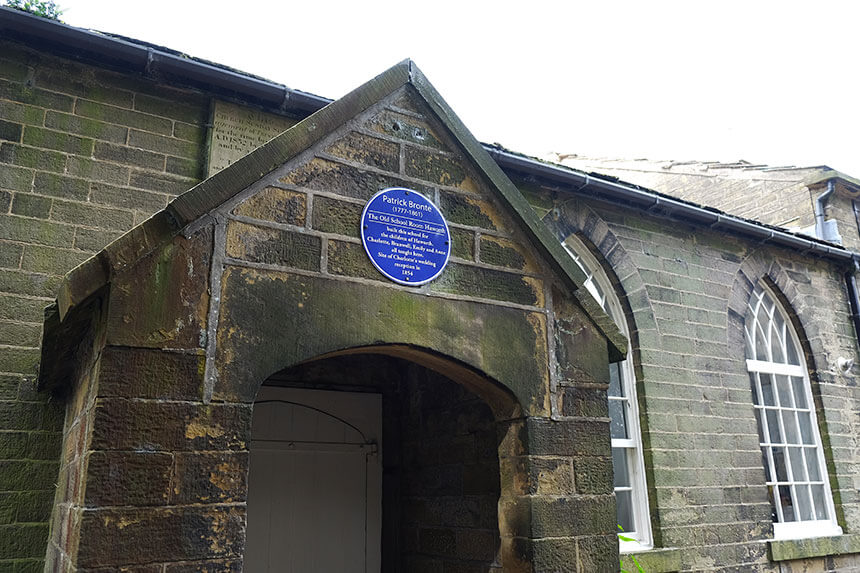
Haworth Main Street
Don’t miss Haworth’s picturesque high street. Narrow and traffic free, it winds down the hill from the Parsonage and church towards the bottom of the valley. The street is full of little shops selling gifts, sweets, antiques, and of course books. There are also plenty of pubs and tea rooms selling cream teas.
The whole street is lined with pretty stone houses and paved with traditional stone sets. It’s easy to imagine the Brontë sisters walking down here when they lived in Haworth.
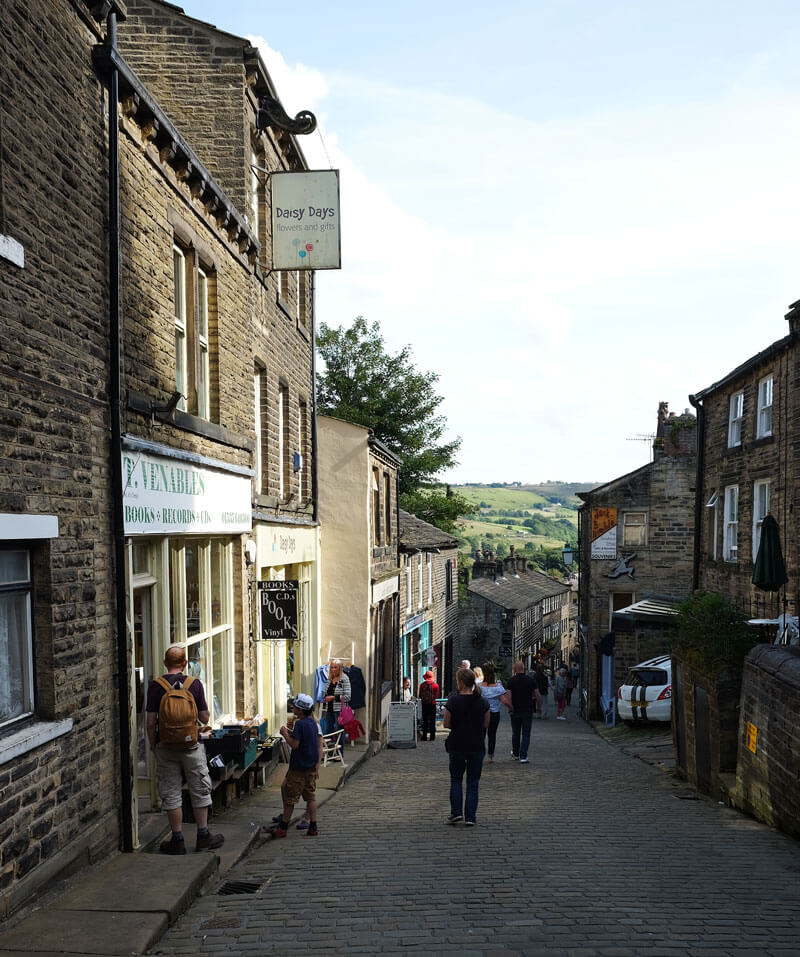
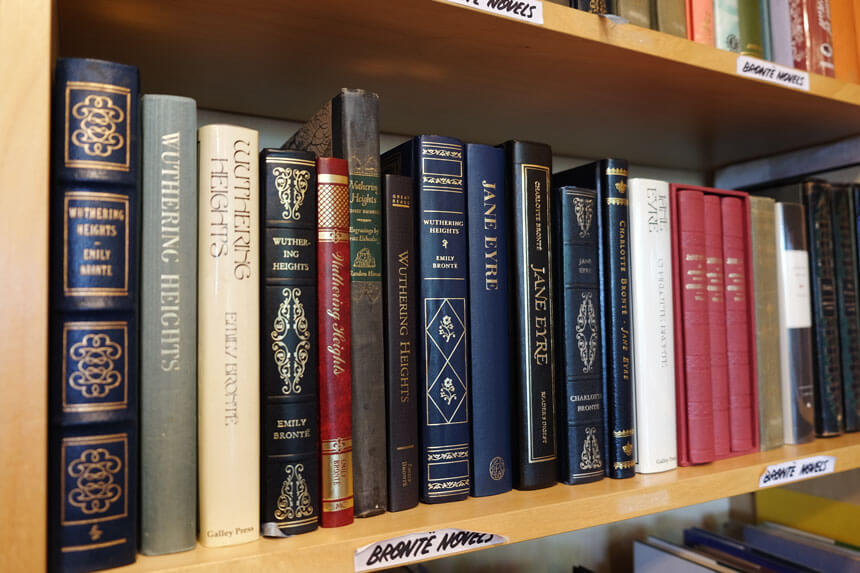
Haworth Station and the Keighley and Worth Valley Railway
The Keighley and Worth Valley Railway is a preserved railway, rescued by volunteers after the branch line from Keighley through the Worth Valley was closed in 1962. Haworth station has been beautifully restored to its former glory and visitors can take a ride on a heritage train, pulled by either a steam locomotive or a 1960s heritage diesel. The Keighley and Worth Valley Railway has special events all year round, including Santa Specials for children at Christmas, Steam Galas and musical events.
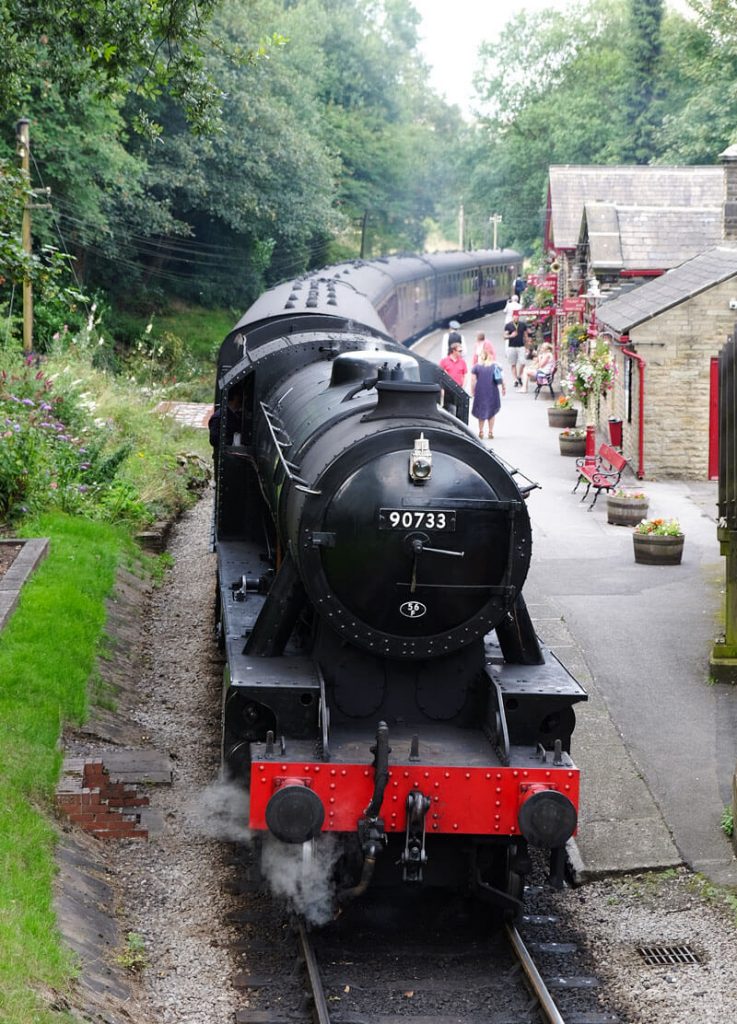
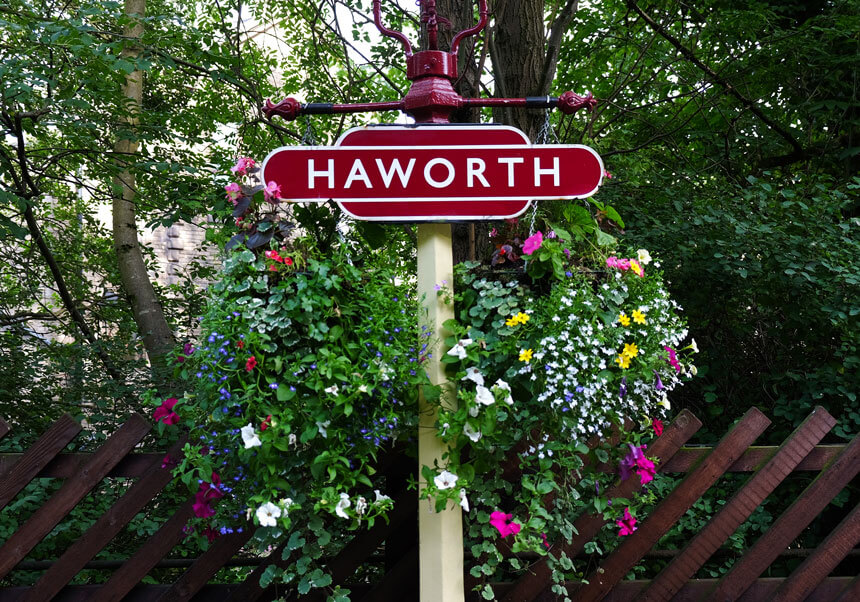
Haworth Station opened in 1867, twelve years after Charlotte Brontë died, but she still had a part in the line being built. In 1861 a civil engineer tried to visit Haworth by train to pay tribute to Charlotte but was surprised to find that the Worth valley had no railway. He proposed a branch line from Keighley serving Haworth and two other small towns, and the line opened six years later.
The Keighley and Worth Valley Railway has appeared in a number of films and TV shows. The film most closely associated with the line is the classic 1970 children’s movie The Railway Children. Much of The Railway Children was filmed at Oakworth station, the next station down from Haworth.
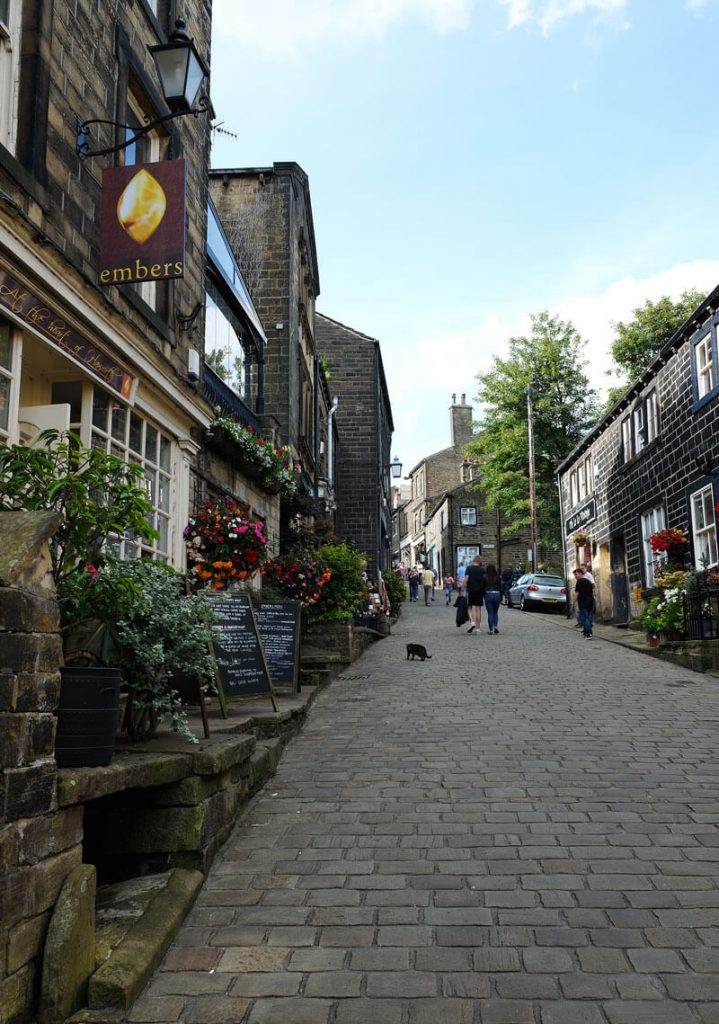
Brontë-inspired walks across the moors
For dedicated walkers and Brontë fans, a 43-mile walking route called the Brontë Way has been put together. This takes in Thornton Village near Bradford, where Charlotte, Emily and Anne were born, along with Ponden Hall, which inspired Wuthering Heights’ Thrushcross Grange and Oakwell Hall which appears in Fieldhead in Charlotte’s novel Shirley.
If you’re looking for more of a quick walk on your day trip to Haworth instead of a multi-day hike, there are a number of locations which the sisters loved to walk to, and which you can also visit. The most popular is the Brontë Waterfall, a magical small waterfall in a rocky moorland dell, around three miles from Haworth.
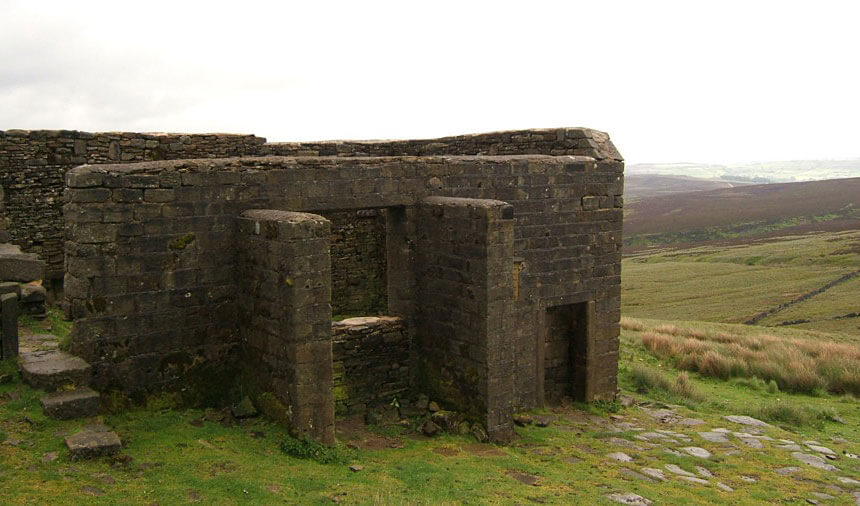
Just over a mile further on from the Brontë Waterfall you’ll come to Top Withens. This old farmhouse (now in ruins) is often believed to have been the inspiration for Wuthering Heights in Emily Brontë’s novel. There’s no proof that this is the spot Emily had in mind for the Earnshaw’s house, but it’s certainly a very evocative spot.
Further across the moors into Lancashire, you’ll find Wycoller and the ruins of Wycoller Hall. Charlotte is believed to have based Ferndean Manor in Jane Eyre on Wycoller Hall.
How to get to Haworth
By car
It’s relatively easy to get to Haworth by car, but some of the roads in the area (especially over the moors) are very narrow and parking in the village is limited. That said, visiting Haworth by car does give you more flexibility, especially if you want to visit nearby attractions like Hardcastle Crags, Heptonstall and the village of Hebden Bridge.
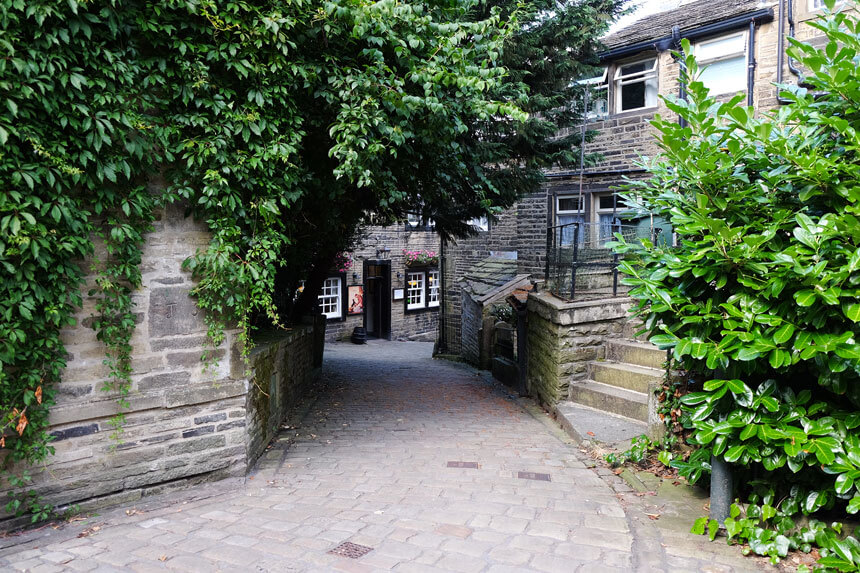
By train
This is probably the loveliest way to travel to Haworth and Brontë country, but make sure you check train times from Keighley to Haworth on the Keighley & Worth Valley Railway well in advance. You can get a direct train to Keighley from Skipton, Leeds and Bradford, or change at Leeds for services from York, Manchester and other cities.
Travelling to Haworth by train doesn’t mean missing out on nearby attractions. Another historic mill town, Saltaire, is on the same railway line between Leeds/Bradford and Skipton and is well worth a visit.
Would you like to visit Haworth, the Brontë Parsonage Museum and Brontë Country? Pin it for later!
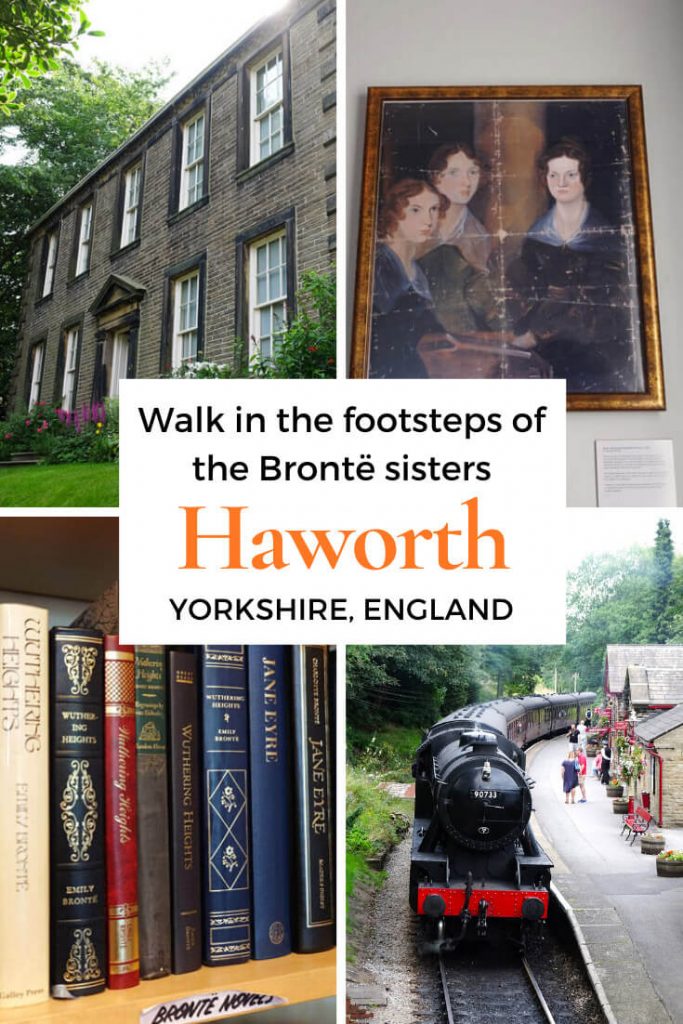


Thankyou for all that information
It will help us to know these facts when we are visiting.
Thanks Audrey, I hope you have a great time when you visit Haworth 🙂